Although Ora-ri village (now Ora-dong) is part of modern Jeju City, it was a rural community of thatched cottages at the time of Jeju 4·3, and it still boasts tranquil woodlands, volcanic cones and lush river valleys. Its day of infamy came on May 1, 1948, when the community was the victim of an arson attack that would intensify violence across the island. Although the arson was blamed on the armed resistance group, it was actually carried out by the Northwest Youth Association to scupper a peace deal agreed on April 28. Nevertheless, the attack precipitated intensified repression across the island by state forces, and footage of the arson filmed by the USAMGIK was used in a propaganda film titled “Cheju-Do May Day.” More than 240 Ora-ri residents lost their lives during Jeju 4·3 including two of the six people shot dead in the March 1 Shooting Incident at Gwandeokjeong Pavilion.

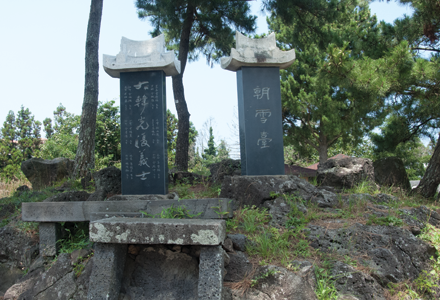
Joseoldae Monument
The 1905 Korea-Japan Protectorate Treaty was followed by the Japanese annexation of Korea in 1910. In protest, 12 local Confucian scholars formed a group called “Jibuigye” to reaffirm their commitment to the fight against Japan. They inscribed the term “Joseoldae” on a stone wall, meaning that they will avenge Joseon’s disgrace against Japan.

Eouneul District
The former traditional farming district, Eouneul, could not evade Jeju 4·3. The district was completely destroyed and the villagers had to either move to other areas (such as Ora Village) or wandered in the snowy weather. Thirteen of the 100 residents were killed during Jeju 4·3. Eouneul District was never rebuilt.
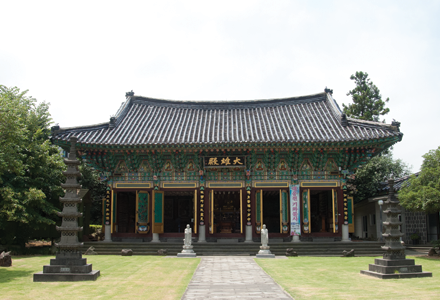
Woljeongsa Temple
Woljeongsa Temple was Jeju’s first buddhism training center. During Jeju 4·3, five buildings at the temple site were burned, and buddhist monk Kim Deok-su (a son of buddhist monk Kim Seok-yoon) was killed near Bakseong Stream in December 1948. In February 1949, the counterinsurgency forces, which had previously burned Gwaneumsa Temple, set fire on Woljeongsa’s buddhist sanctum and the entire temple was devastated. After Jeju 4·3, several monks tried to bring life back to the temple, and as a result, Woljeongsa was reborn.
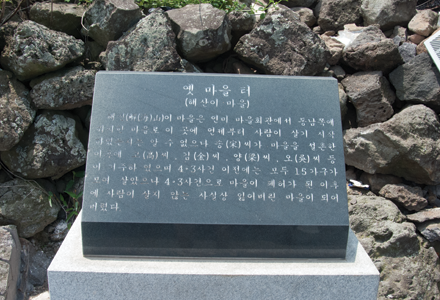
Haesani District
Haesani District is southeast of Yeonmi Village and before Jeju 4·3, 10 households with 50 residents lived here. Jeju 4·3 destroyed the district and no one has since lived there. Broken glass bowls are found in the area, and where there used to be houses bamboo now flourishes.
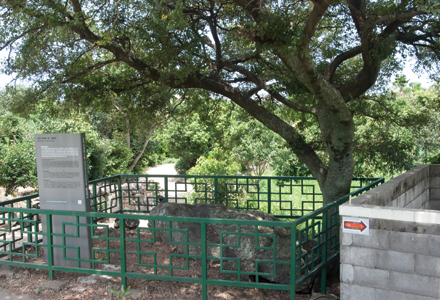
Dolmen (Ora Dolmen No. 1)
The history of this memorial stone dates back to the Bronze era. The Jeju myth of “Dolbae” is related to the dolmen remains. The flat stone walls create a room for the remains, which is covered with another wide flat stone on its top. Presumably, the dolmen culture traveled from the Korean Peninsula to Jeju Island and then to Kyushu, Japan. Jeju’s dolmen provide invaluable research data for the prehistoric cultural exchange.
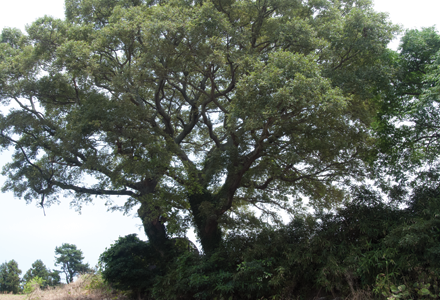
Seondalbengdui District
This is where seven local households had lived before Jeju 4·3. In November 1948, the eviction order displaced the villagers and fire during the suppression operation by the counterinsurgency forces burned down the district. To this day, a small stream and neighborhood streets, as well as a tree where a swing had been hung, have been preserved.